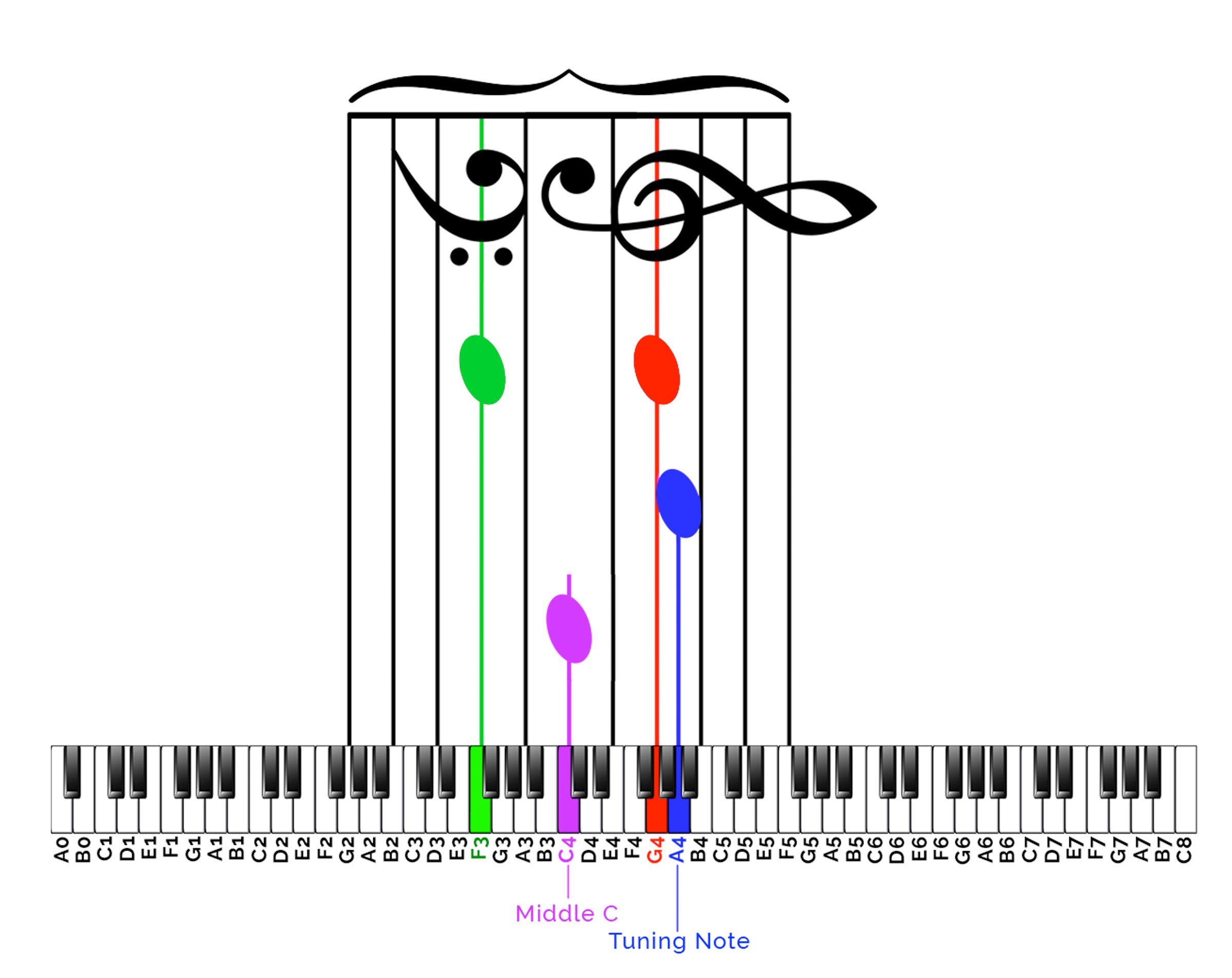Basic notations of the music
The Staff
The staff consists of five lines and four spaces. Each of those lines and each of those spaces represents a different letter, which in turn represents a note. Those lines and spaces represent notes named A-G, and the note sequence moves alphabetically up the staff.









The Staff
The staff consists of five lines and four spaces. Each of those lines and each of those spaces represents a different letter, which in turn represents a note. Those lines and spaces represent notes named A-G, and the note sequence moves alphabetically up the staff.

Treble Clef
There are two main clefs with which to familiarize yourself; the first is a treble clef. The treble clef has the ornamental letter G on the far left side. The G’s inner swoop encircles the “G” line on the staff. The treble clef notates the higher registers of music, so if your instrument has a higher pitch, such as a flute, violin or saxophone, your sheet music is written in the treble clef. Higher notes on a keyboard also are notated on the treble clef.

We use common mnemonics to remember the note names for the lines and spaces of the treble clef. For lines, we remember EGBDF by the word cue “Every Good Boy Does Fine.” Similarly, for the spaces, FACE is just like the word “face.”
Bass Clef
The line between the two bass clef dots is the “F” line on the bass clef staff, and it’s also referred to as the F clef. The bass clef notates the lower registers of music, so if your instrument has a lower pitch, such as a bassoon, tuba or cello, your sheet music is written in the bass clef. Lower notes on your keyboard also are notated in the bass clef.

A common mnemonic to remember note names for the lines of the bass clef is: GBDFA “Good Boys Do Fine Always.” And for the spaces: ACEG, “All Cows Eat Grass.”
Notes
Notes placed on the staff tell us which note letter to play on our instrument and how long to play it. There are three parts of each note, the note head, the stem, and the flag.



Landmark System To Read Notes On The Clefs
In piano, we’ll use the treble clef and the bass clef.
Your right-hand often plays notes in the treble clef, and your left-hand plays notes in the bass clef.
This diagram below shows you the positions of musical notes in the treble clef:

And below are the positions of musical notes in the bass clef:

Mental flip approach of remembering piano notes


Comments
Post a Comment